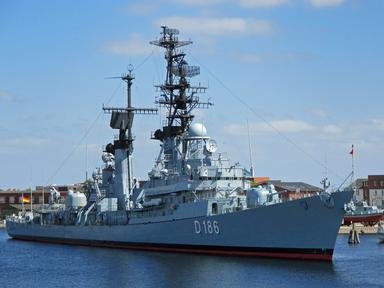Quiz Answer Key and Fun Facts
1. What country built the original dreadnought battleship, and in what year was she commissioned?
2. Germany and Great Britain had been naval rivals since the 1890s, and Germany lost no time in designing and building her own dreadnought-type ships. What was the name of Germany's first dreadnought-class of ships?
3. France had just begun building a large class of pre-dreadnought battleships and had to complete them before building her own dreadnoughts. What was the name of the first French dreadnought class?
4. The Imperial Russian Navy had to rebuild its fleet virtually from scratch after the 1905 defeat by Japan at Tsushima. What was their first class of dreadnoughts called?
5. Italy also participated in the dreadnought-building frenzy, as having these ships in the fleet was a prerequisite to being considered as a great power. What was the name of the first Italian dreadnought?
6. The Austro-Hungarian Empire was one of the smaller European navies, but also aspired to be one of the great powers by building dreadnoughts. What was the name of her first class of these ships?
7. The Ottoman Empire, another navy aspiring to Great Power status, did not have the shipbuilding capacity to construct large capital ships, so contracted with British yards to have them built. The Turks never received any of the ships contracted in Britain; where did their first dreadnought come from?
8. Spain, with technical assistance from Britain, also built three dreadnoughts, which were the smallest of the type ever constructed. What was the class name?
9. How many dreadnought battleships did Greece build or procure prior to 1925?
10. Did the Netherlands ever build dreadnought battleships for its fleet or for a foreign power?
Source: Author
Reamar42
This quiz was reviewed by FunTrivia editor
stedman before going online.
Any errors found in FunTrivia content are routinely corrected through our feedback system.
